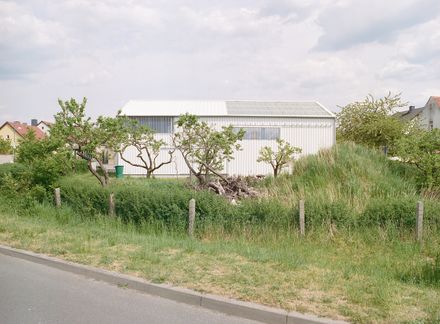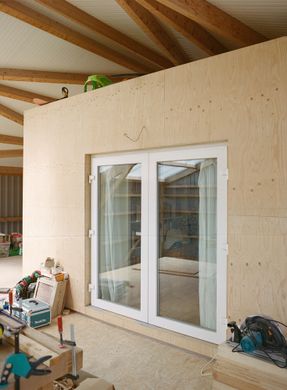Where the Wild Morels Grow House
ARCHITECTS
C/o Now
STRUCTURAL ENGINEER
Kränzliner Ingenieursbüro
PHOTOGRAPHS
Zara Pfeifer
AREA
288 M²
YEAR
2022
LOCATION
Gross Kreutz, Germany
CATEGORY
Houses
Text description provided by architect.
The Berlin housing market has changed since the last move. It’s no longer possible to find affordable apartments with extra space for the children or the parent who needs care.
And it’s no more just cultural workers leaving Berlin on days off for the new artist colonies in Uckermark. More and more Berliners decide to keep their jobs in the city but turn their backs on it permanently in favor of a life in Brandenburg.
There, the promise of picturesque houses that can be restored with just a few personal contributions beckons.
And thanks to the low land prices compared to Berlin, construction can be realized without the eternal commitment to a building group.
Or perhaps a low-cost, rough house made of cast-in-place concrete, which nevertheless meets the aesthetic standards known from magazines?
A quick calculation with the characteristic values of the Building Cost Information Center of the German Chambers of Architects (BKI) translates the client's budget into 70 m2 of living space cast in concrete. No improvement over the apartment they now live in.
On the property, which is 100 minutes away by public transport and has already been purchased by the clients, not only no additional room would be gained, but living space would even be lost.
Perhaps one would have to work with readymades, get a prefabricated hall like those used by farms, and then expand it according to the house-in-house principle, as known from the greenhouses built by Lacaton & Vassal or Jourda & Perraudin in the late 1980s?
C/O NOW OFFERED THE CLIENTS A CHOICE OF BOTH SCENARIOS:
Either a 70 m2 house made of exposed concrete or a hall with a footprint of 200 m2, which could then be expanded over time, protected from the weather and in accordance with the budget - also in part with the client's own contribution - building block by building block up to a maximum of 400 m2 of usable space on two levels.
Thus, depending on the parameters of the site, the largest possible weatherproof but not air-conditioned hall was created from prefabricated elements in timber construction, which were clad with closed, opaque, transparent, and partially openable industrial building materials such as trapezoidal sheets in the wall area and sandwich panels in the roof.
In addition to lighting and ventilation openings, the shell also includes two sliding doors that open the hall to the garden.
The actual construction began with a heatable core house of 90 m2 on two levels, to which are added a total of 65 m2 of "loggia" and terrace, as well as 60 m2 of an indoor garden in the climatic intermediate layer of the hall.
From this basic setting, volumes can now be added or taken away again and again under the weather-protected conditions created by the hall, without having to resort to especially robust materials or complicated construction techniques such as elaborate sealing measures.












































